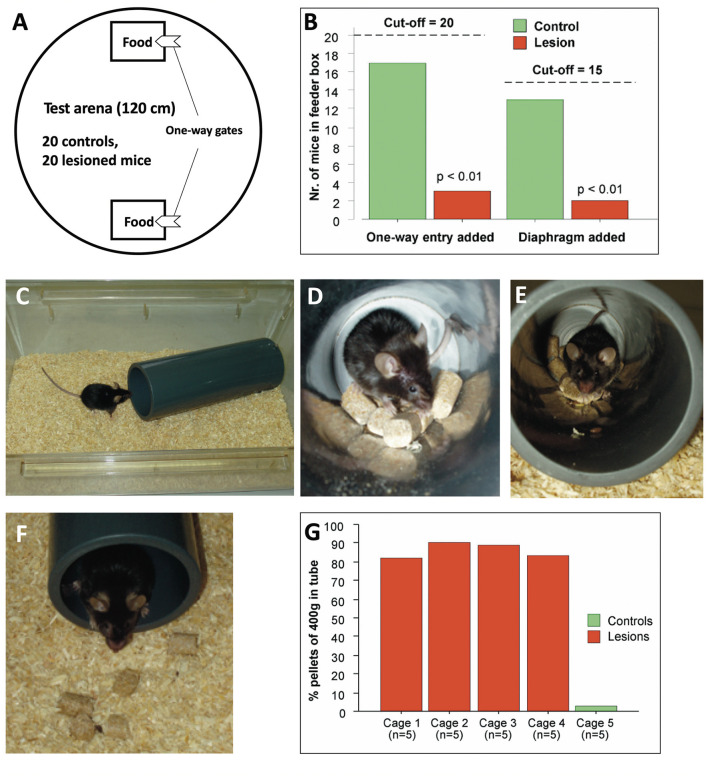Figure 11.
Behavioral testing of hippocampectomized mice in a Russian field station. Mice were bilaterally lesioned and underwent preliminary testing for spontaneous behaviors before placing them in an outdoor pen (see Figure 12) where they had to enter computer-controlled feeder boxes. (A) A first check was done by placing two familiar mouse cages equipped with one-way gates and containing food in a circular arena. The 40 operated female mice carrying transponders were placed at once in the arena, and the test was stopped when the observers counted 20 mice having entered test cages. The test was repeated 1 day later by adding a diaphragm to the one-way gate. (B) The first test revealed a highly significant difference in mice entering the cages, 17 controls, and only three hippocampally lesioned mice. After adding a diaphragm, the cut-off was set at 15 animals of which there were still only 2 lesioned animals in the cage. (C) The food-tube test for mice was designed by Deacon et al. (2002). A plastic tube was filled with 400 g mouse food pellets and placed overnight in a cage with one or several mice. Most laboratory mice begin an almost frantic removal of food pellets. (D) View of working mouse from inside. (E) Outside view with mouse carrying a pellet to the exit. (F) Dropping of the pellet outside. (G) Result of an overnight test with 25 mice. Because tubes were limited at the field station, each cage contained five mice. The (sham-operated) control mice practically cleared the tube, whereas among the lesioned ones, only a few mice removed some pellets. Note that they were physically not handicapped and active. Mice were operated by Rob Deacon, tested for adaptation by Mike Galsworthy, and pictures of the food-tube test were made by Giovanni Colacicco.

